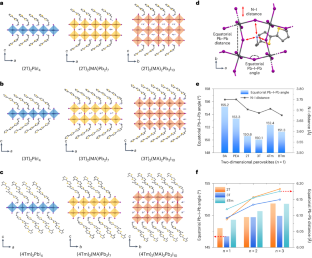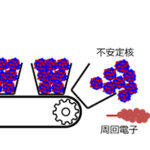2023-08-31 ノースウェスタン大学
◆この発見は、長いGRBの起源だけでなく、ブラックホール、その磁場、および吸着ディスクの性質と物理学に対する洞察も提供します。研究はアストロフィジカルジャーナルに掲載されました。
<関連情報>
- https://news.northwestern.edu/stories/2023/08/unprecedented-gamma-ray-burst-explained-by-long-lived-jet/
- https://iopscience.iop.org/article/10.3847/2041-8213/aceeff
ブラックホールと中性子星の合体による数秒の相対論的ジェットの大規模進化(Large-scale Evolution of Seconds-long Relativistic Jets from Black Hole–Neutron Star Mergers)
Ore Gottlieb, Danat Issa, Jonatan Jacquemin-Ide, Matthew Liska, Francois Foucart, Alexander Tchekhovskoy, Brian D. Metzger, Eliot Quataert, Rosalba Perna, Daniel Kasen
The Astrophysical Journal Letters Published 2023 August 31
DOI:10.3847/2041-8213/aceeff

Abstract
We present the first numerical simulations that track the evolution of a black hole–neutron star (BH–NS) merger from premerger to r ≳ 1011 cm. The disk that forms after a merger of mass ratio q = 2 ejects massive disk winds (3–5 × 10−2M⊙). We introduce various postmerger magnetic configurations and find that initial poloidal fields lead to jet launching shortly after the merger. The jet maintains a constant power due to the constancy of the large-scale BH magnetic flux until the disk becomes magnetically arrested (MAD), where the jet power falls off as Lj ∼ t−2. All jets inevitably exhibit either excessive luminosity due to rapid MAD activation when the accretion rate is high or excessive duration due to delayed MAD activation compared to typical short gamma-ray bursts (sGRBs). This provides a natural explanation for long sGRBs such as GRB 211211A but also raises a fundamental challenge to our understanding of jet formation in binary mergers. One possible implication is the necessity of higher binary mass ratios or moderate BH spins to launch typical sGRB jets. For postmerger disks with a toroidal magnetic field, dynamo processes delay jet launching such that the jets break out of the disk winds after several seconds. We show for the first time that sGRB jets with initial magnetization σ0 > 100 retain significant magnetization (σ ≫ 1) at r > 1010 cm, emphasizing the importance of magnetic processes in the prompt emission. The jet–wind interaction leads to a power-law angular energy distribution by inflating an energetic cocoon whose emission is studied in a companion paper.



